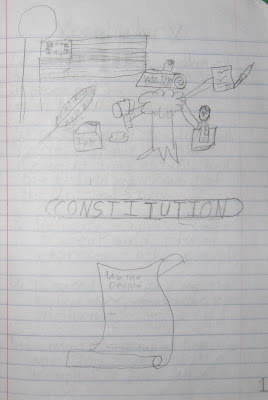Week 3 Composer: Franz Josef Haydn -- London Symphony (in 4 parts)
1. Listen to London Symphony, 1st Movement (about 5 minutes)
2. Listen to London Symphony, 2nd Movement (about 7 minutes)
3. Listen to London Symphony, 3rd Movement (about 5 minutes)
4. Listen to London Symphony,4th Movement (about 5 minutes)
London, 1st Movement
Week 3 Artist: John Singleton Copley (American, 1738-1815) -- The Red Cross Knight, 1793
| Red Cross Knight by John Singleton Copley |
2. Create a Lune poem about this work of art. Use the worksheet found here to help you. Instructions on how to write a Lune poem and a sample poem can be found here.
3. Read over the information on The Red Cross Knight. Did you know this painting illustrates an episode from Edmund Spenser's Faerie Queene? Below is the version of the Faerie Queene we read.
Art Lesson for this week:
Select one or more of the following activities to do this week.
- A Self-Portrait using crayons (sutitable for young students)
- Put Yourself on a Stamp - Self Portrait (older students)
- NGA Faces & Places--Portraits: Make your own portraiture. Use the online program to create a face and background and print out your final product. The portrait printed about 4x5 inches on my computer.
- Faces & Places--Landscapes: Use this online program to create a landscape. We had a lot of fun with this one. It printed out about 4x7 inches on my computer. It also has animation and music.






































